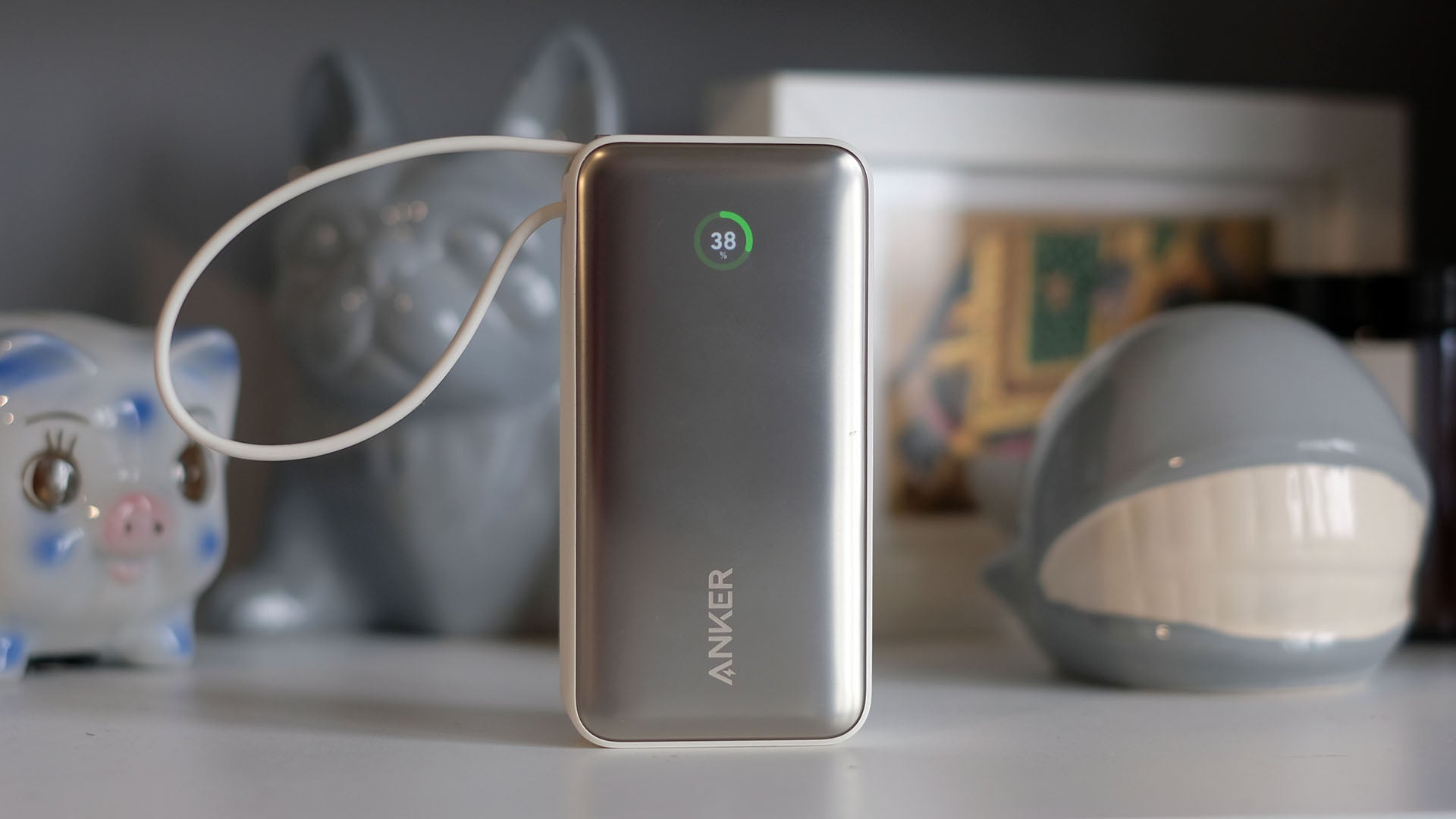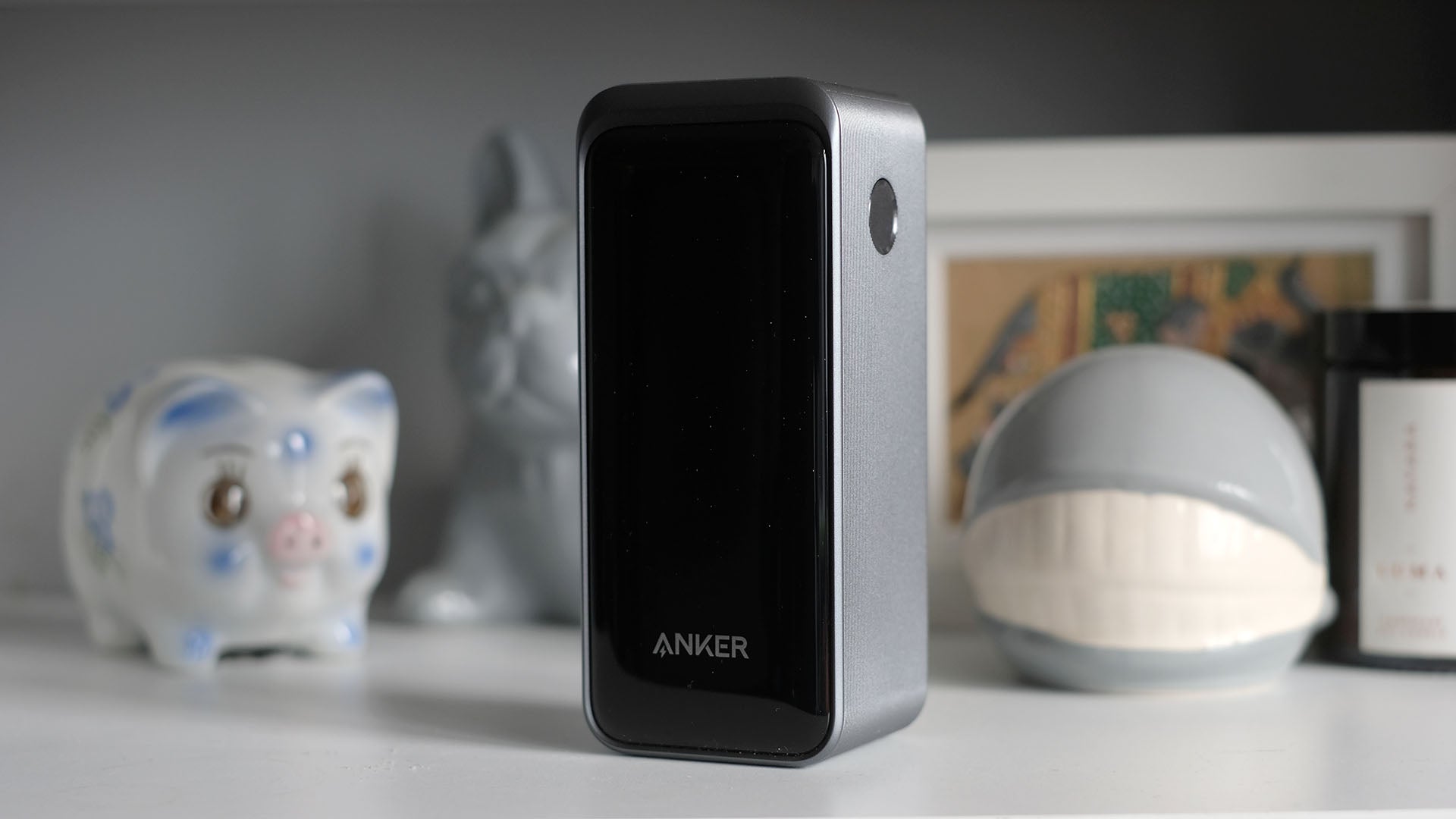DJI Mic 2 Review
DJI’s popular content creator mic ascends to new heights

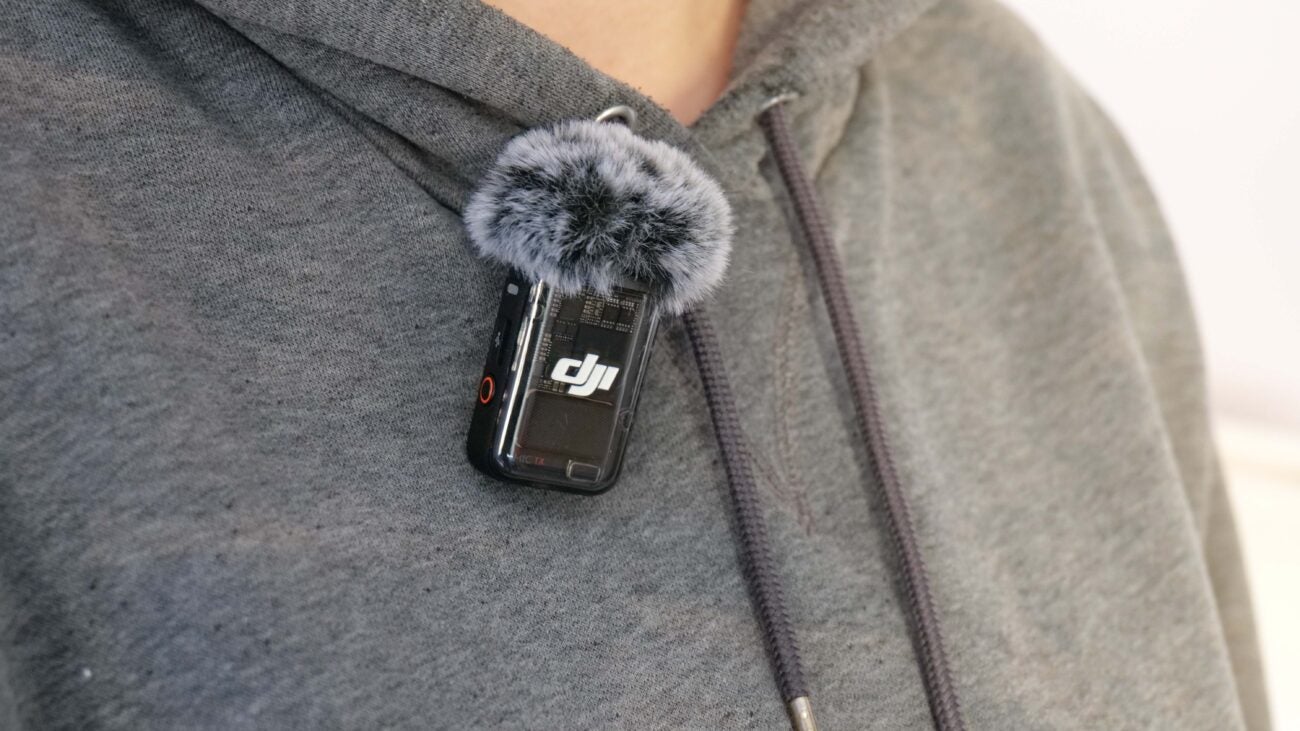

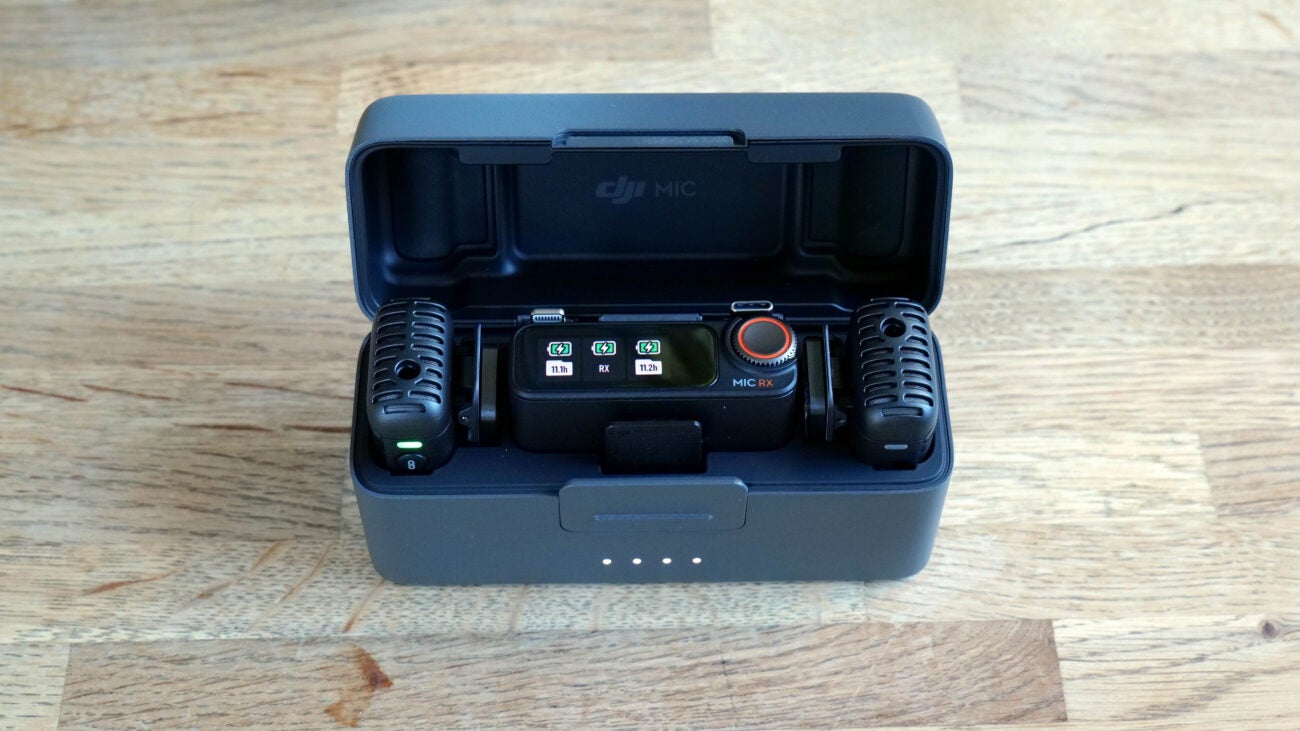

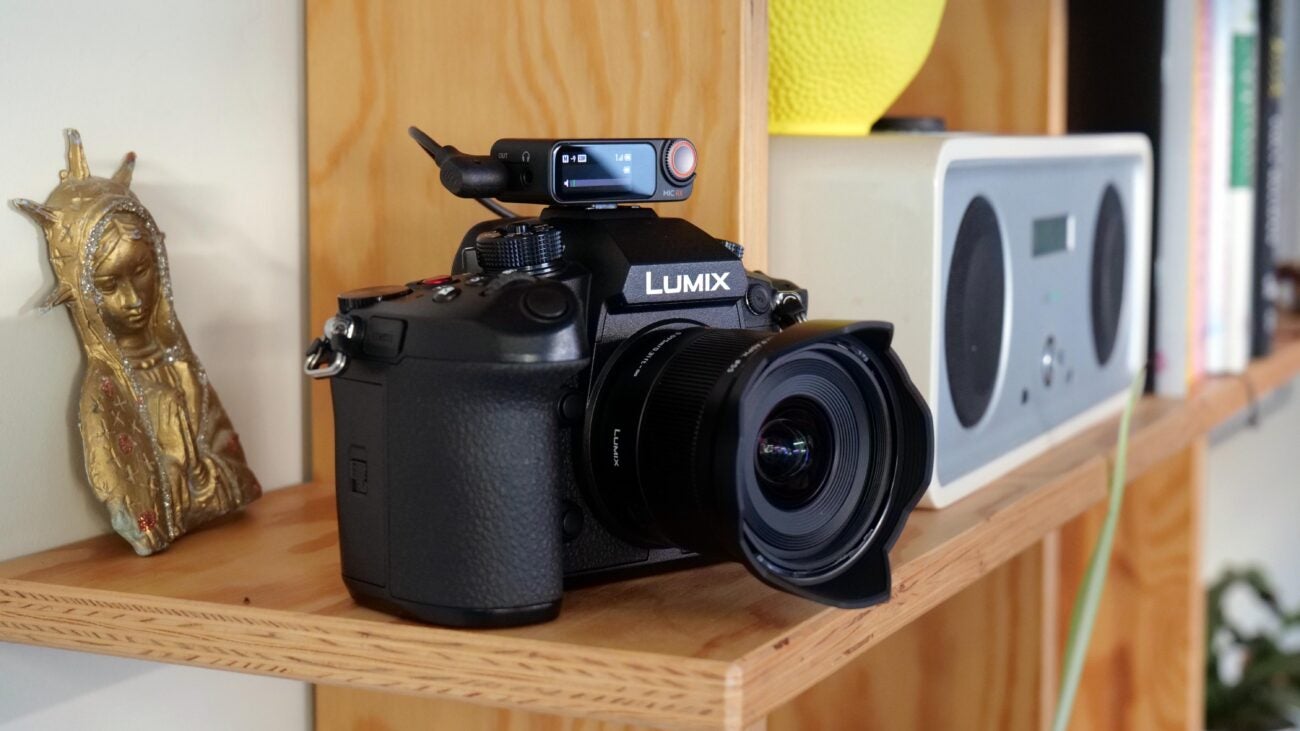

Verdict
Content creators, podcasters and multimedia journalists in need of a portable and easy-to-use mic setup with excellent audio quality should give the DJI Mic 2 a close look. There are certainly cheaper options available (including, while stocks last, the original DJI Mic), but the Mic 2’s high-quality audio, user-friendliness and effective noise cancellation go a long way towards justifying the outlay.
Pros
- Excellent sound quality and noise cancelling
- Streamlined, fuss-free design
- Solid battery life
Cons
- Bluetooth doesn’t work with older devices
- Fairly pricey
Key Features
- Intelligent noise cancellationAI-assisted reduction of environmental sounds
- 32-bit float recording optionWider dynamic range audio for unpredictable environments
- Battery life-boosting charging caseTough protective case offering up to 18 hours of use
Introduction
Anyone who regularly watches content creators on YouTube or TikTok has likely seen the original DJI Mic clipped into collars and lapels when the video presenter is working ‘out in the field’.
Alongside competitors like the Røde Wireless Go II, AnkerWork M650 and Hollyland Lark C1 this small, lightweight and omnidirectional wireless microphone has become one of the most popular lavalier mics for quickly and effectively recording voiceovers, interviews and vlogs – even in challenging outdoor conditions.
The DJI Mic 2 is a new, updated version of the Mic with a raft of enhancements and additions, the most notable being the introduction of noise cancelling technology, direct Bluetooth connectivity, longer battery life and an option to record in wider dynamic range 32-bit float audio rather than the standard 24-bit format.
These new and improved features make the Mic 2 slightly more expensive than the original Mic (which seems likely to remain part of DJI’s current range for some time), so do they justify the additional cost or should users stick with the original? Read on for my verdict.
Design
- Robust, compact charging case
- Very lightweight TX transmitters
- RX receiver can connect to cameras and phones
While you don’t necessarily have to purchase it this way, for my money, the best starter package for the DJI Mic 2 is the £309 all-in-one bundle that comes with the RX receiver, two TX transmitters and connector accessories, all inside a sturdy and pocket-sized charging case, plus a soft carrying bag with cables and detachable furry windshields for the transmitters.
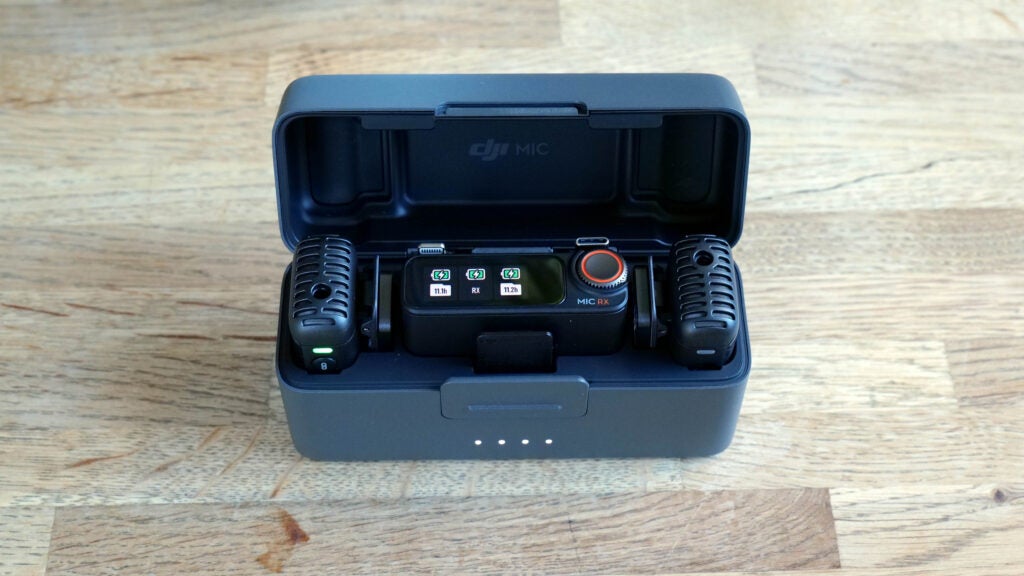
The charging case (which itself charges via USB-C and has a four-LED indicator on the front for at-a-glance info on how much juice is remaining) has snug, magnetised spaces for the RX, two TX units and the RX’s USB-C and Lightning adapters, and automatically tops up the batteries of anything inside while closed. Open up its hinged top, and the RX’s 1.1-inch OLED panel gives an immediate update on the power situation for itself and the two TX units. I found that all very neat and fuss-free; it’s all in one place, so you won’t have to go out on a shoot stuffing bits and pieces into various pockets or bag compartments.
The RX receiver weighs just 28g and comes with a cold shoe adapter for easy mounting on a DSLR or system camera. The OLED screen is touch-sensitive but small, so larger-fingered or gloved users can instead use its dial to navigate the menu screens and change settings.
It has a single power button, USB-C input (for power), 3.5mm audio output to run to a camera and a 3.5mm headphone output for monitoring audio levels. There’s also a slot on the back for the aforementioned USB-C and Lightning adapters; slide one of these in and you can connect the RX directly to a smartphone.
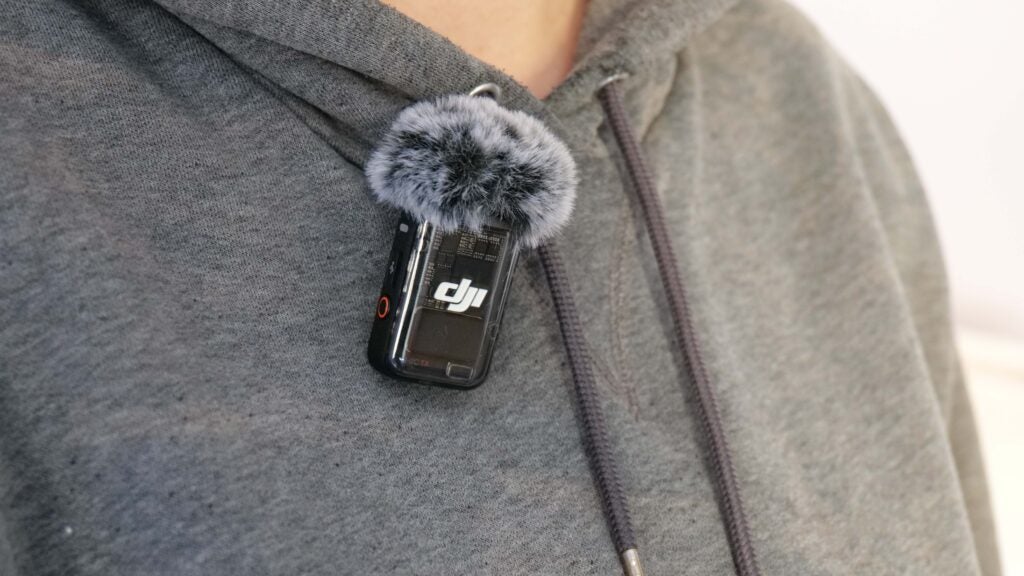
The TX transmitter (also 28g) can be attached to clothing via its clip or a strong, solid magnet; once on, I found it so lightweight I couldn’t even feel that it was attached. It comes with three buttons (power, linking and record stop/start), plus a 3.5mm input for other mics (such as DJI’s own discreet lavalier mic) that doubles as a mounting point for a fluffy windshield.
Features
- Direct Bluetooth connection for TX
- 250m TX-to-RX transmission range
- Up to 18-hour battery life
The TX can operate entirely independently of the RX, coming with 8GB of built-in storage (enough for around 14 hours of standard 24-bit audio) and Bluetooth. This, which is one of the new features introduced by the Mic 2, allows you to connect a TX directly to a device, completely bypassing the RX – potentially handy if you want to travel really light.
You can also use the TX’s link button to stop/start recording on your device remotely (as long as it’s a device where such a function can be controlled through the volume buttons).
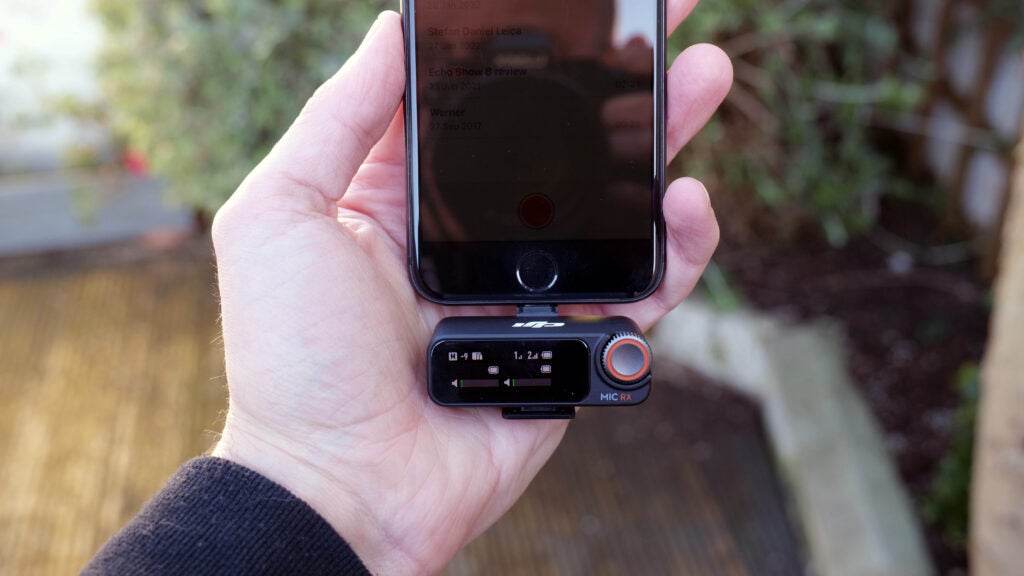
I managed to get it connected to both my MacBook Air M2 and my iPhone 8, but with the latter the age of the device meant that the functionality just didn’t cut it; in fact, the phone seemed to think the TX was a speaker rather than a mic. So, a word of warning to potential buyers who like the idea of this feature: you’ll need a pretty recent device to get it working (check out the full list of compatible phones on DJI’s website).
When using the DJI Mic 2 the ‘traditional’ way, with up to two TX units transmitting to the RX, the transmission quality, stability and range (up to 250m in ideal conditions) is impressive, as it was with the original DJI Mic. That’s not to say the connection is always perfect, however: to test its stability I connected the RX to my laptop and left it in my office while I walked around the house for a couple of minutes recording a voice memo on a TX clipped to my collar.
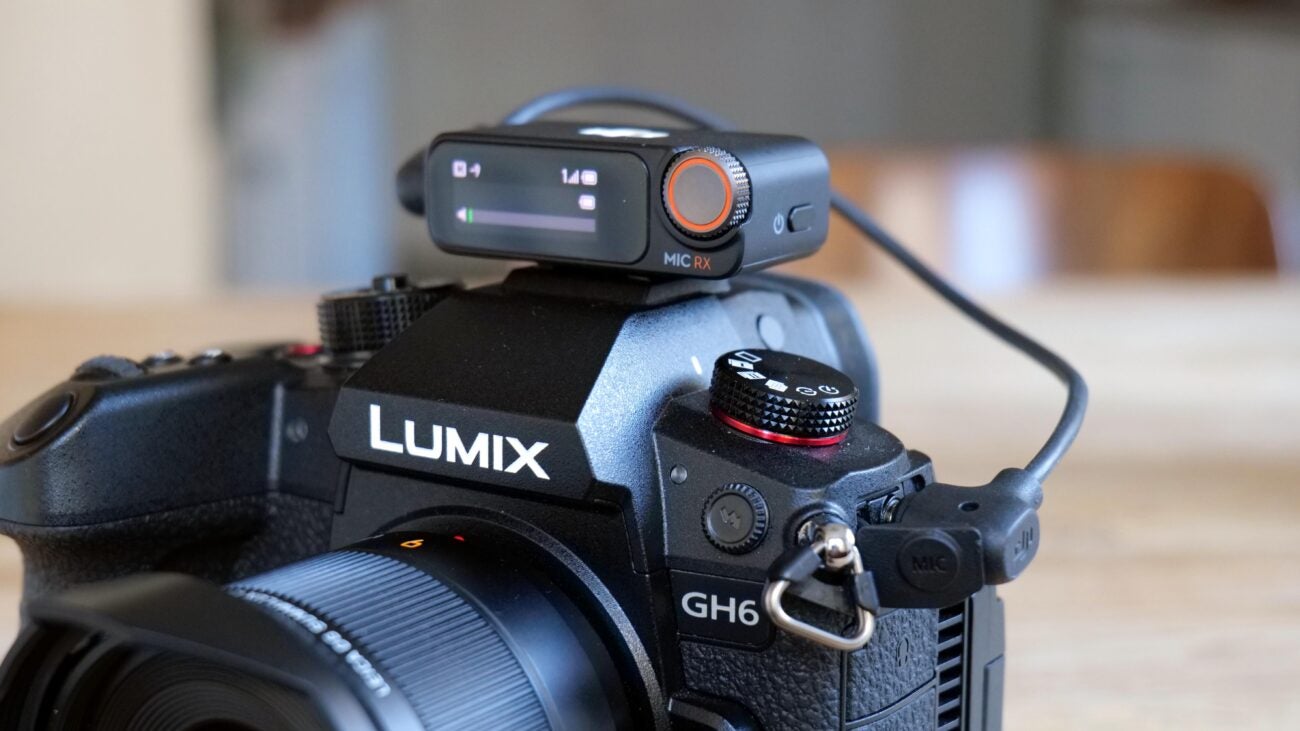

Listening to the results, I found the audio to ‘pop’ at points – likely due to interference from other electrical devices and perhaps the walls/floors of my house. It remained audible, but the resulting audio wouldn’t be usable in a professional piece of media. That suggests users will have to be careful around sources of interference.
Battery life has been given a slight boost over the first-gen Mic. Both the TX and RX units have built-in batteries that last around 6 hours, but when used in conjunction with the case you can get up to 18 hours of recording out of a setup. The original Mic offered 15 hours.
Audio quality
- 48kHz/24-bit standard audio quality
- Mono or stereo recording option
- AI-assisted noise cancelling
As with the original Mic, by default the DJI Mic 2 records audio in WAV format at 48kHz/24-bit quality. That’s more than sufficient for podcasts, voiceovers and vlogs, and when testing the Mic 2 out during a blustery seaside vlogging session I found it to be a tremendous upgrade on using any kind of built-in mic.
There are three main options when recording: Mono, Mono (with Safety Track) and Stereo. Stereo requires two TXs to be used in tandem, with one recording the left channel and the other the right, while the Mono modes use a single TX. For regular Mono, the WAV file’s left and right channels are exactly the same, while the Safety Track records on at the normal setting with the other 6dB lower – the idea being that you can use that quieter track as a backup in the event of an unexpectedly loud noise clipping the regular recording.
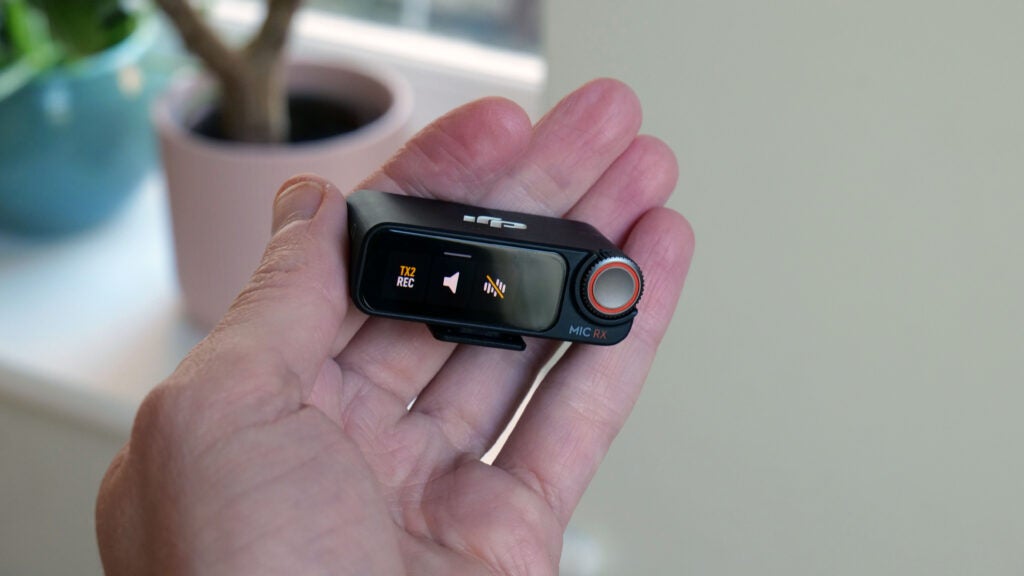
All of the above were available on the original Mic, but the DJI Mic 2 adds the option to record in 32-bit float audio to the TX’s on-board memory. This WAV track will take up more space, but features a much wider dynamic range which – much like when you record HDR video on a camera – affords greater scope for gain adjustment in post-production. I don’t think most users need to go near this setting, but it could be valuable in an unpredictable environment where you may need to capture both loud and quiet sound in the same recording.
The TX’s omnidirectional design picks up audio from all sides but isolates voices very well, and while there was a welcome measure of environmental noise in my test videos (to provide a pleasing ‘on location’ feel) it never interfered with my voiceover. The supplied windshields did a good job of reducing any unwanted wind noise too.
However, if you absolutely must get the clearest vocals while cutting everything else back to a minimum, the Mic 2’s new intelligent noise cancelling is an invaluable go-to feature.
Apparently powered by AI, it results in environmental noise – traffic, wind, waves and crowds – being greatly reduced, and in my experience it doesn’t detract from the voice quality at all; the sound profile definitely changes to feel a little less natural, but quality remains high.
It can even be turned on while a recording is in progress, without having to stop the audio, which I think is a very useful feature indeed for anyone recording on the hoof.
Latest deals
Should you buy it?
You want a wireless mic for all eventualities
Exceptionally portable, user-friendly and able to record good quality audio in a range of noisy environments, the DJI Mic 2 expands on its predecessor’s solid base.
You want the best value for money
The DJI Mic 2 is pricey by wireless microphone standards, and it’s arguable that alternatives such as the Hollyland Lark C1 represent better value – albeit with fewer features and worse performance.
Final Thoughts
As with the first-generation DJI Mic, the DJI Mic 2 takes a potentially complicated product and makes it simple without impacting performance. Yes, it’s quite expensive in comparison to its competitors, but the audio quality, portability, ease of use and addition of new features make it a fantastic go-to option for anyone who wants to improve their vlogs or field recordings without much effort.
How we test
During each microphone review, we conduct a series of recording tests that include sampling audio during ideal settings, with background noise applied and in an outdoor setting (where possible), to give you the best idea of how each device performs in real-world use.
Tested in indoor and outdoor settings
Tested with phone and camera
FAQs
The microphone charges inside the bundled charging case. The case itself uses a USB-C connection to charge.
You can connect the DJI Mic 2 to your PC via a USB-C connection. A charging cable should work fine for the connection.



